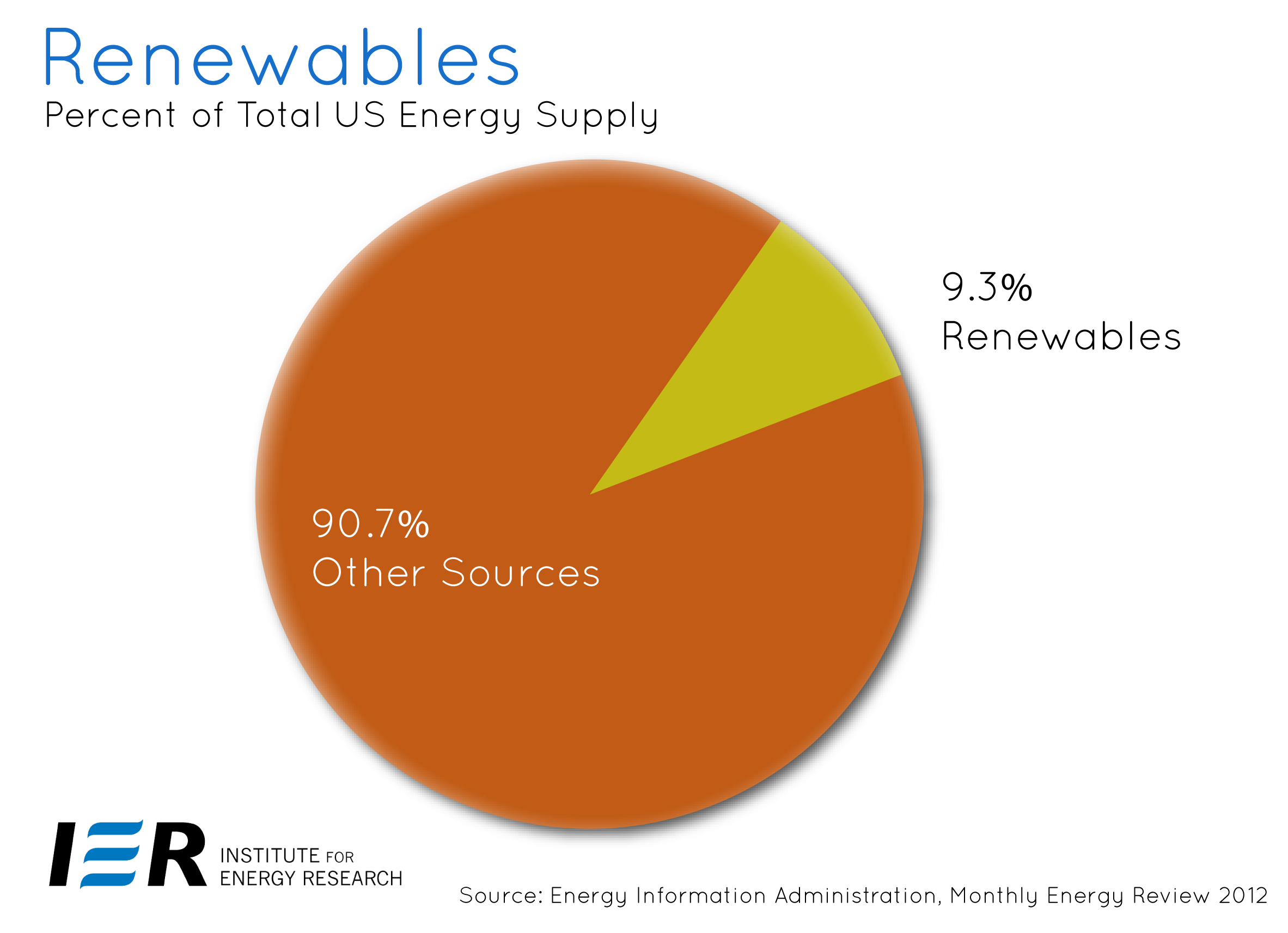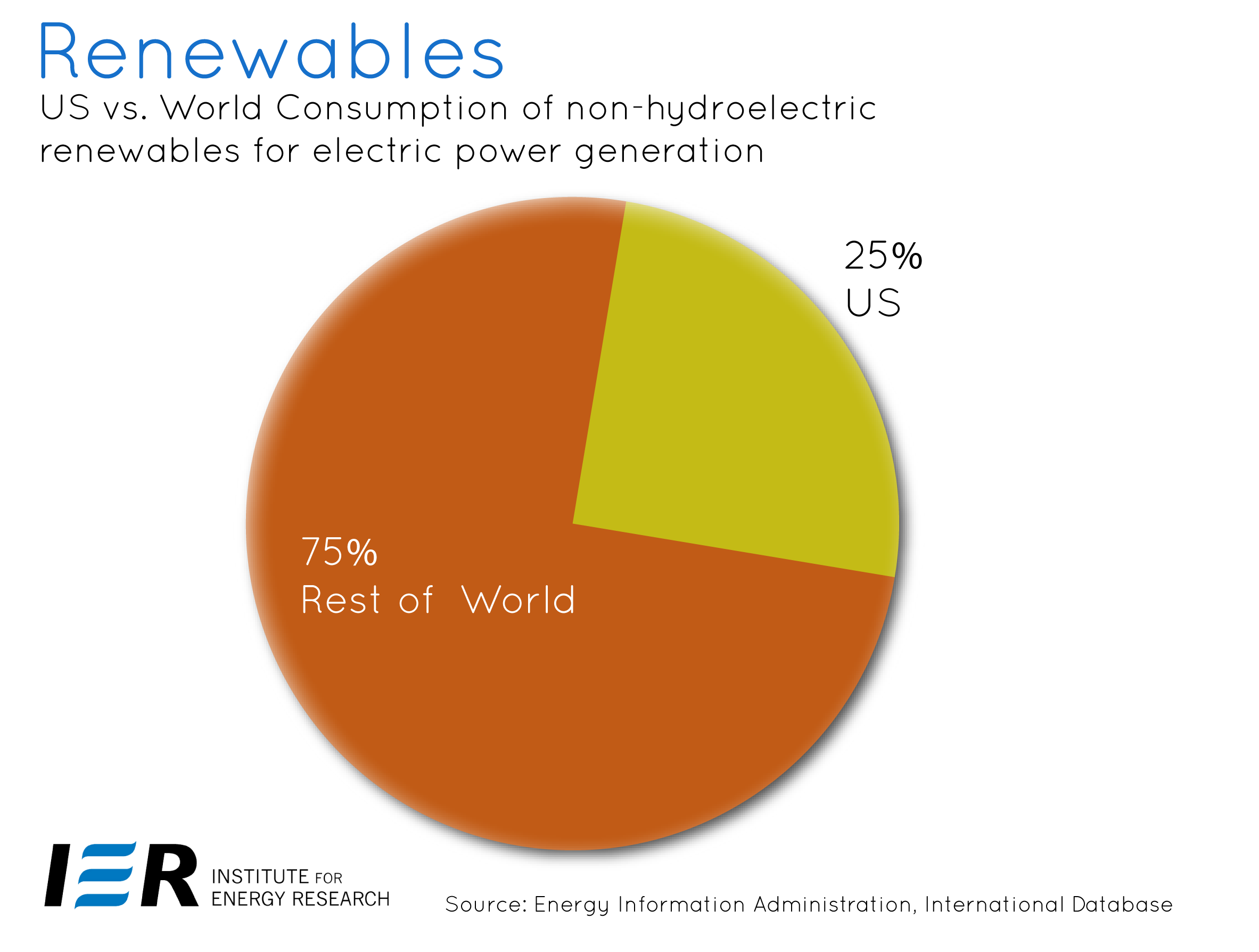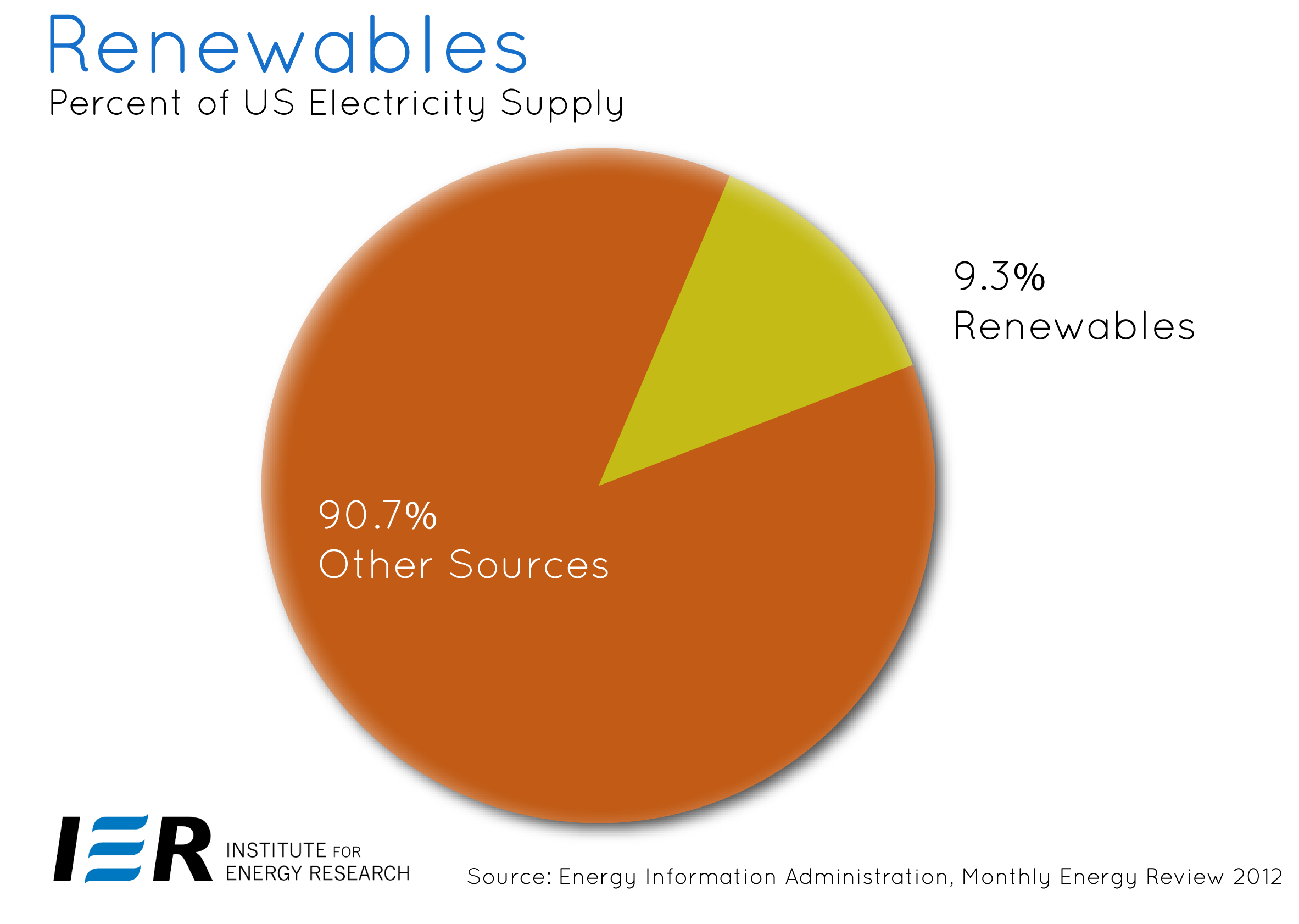Renewable Energy
According to the Energy Information Administration, “renewable energy refers to resources that are replenished in a relatively short period of time.” Renewable energy sources include hydropower, wood biomass (used to generate heat and electricity), alternative biomass fuels (such as ethanol and biodiesel), waste, geothermal, wind, and solar.
Today, many are seeking to use technology made possible by modern, concentrated energy forms to capture and harness dispersed renewable energy potential into concentrated forms. Renewable energy plays a major role in the economies of the developing world.
Renewable energy relies upon the natural forces at work upon the earth, including the internal heat represented by geothermal, the pull of lunar gravity as it affects the potential for tidal power, and solar radiation such as that stored through photosynthesis in biomass.
Renewable Energy in the US
About 9 percent of all energy consumed in the United States in 2011 was from renewable sources[i], and they account for about 13 percent of the nation’s total electricity production[ii].
While a relatively small fraction of our overall energy supply in 20010, the United States was the world’s largest consumer of renewable energy from geothermal, solar, wood, wind, and waste for electric power generation using some 25% of the world’s total. In 2011, the distribution of U.S. renewable consumption by source was [iii]:
- Hydropower 35%
- Biomass Wood 22%
- Biomass Waste 5%
- Biomass Biofuels 21%
- Wind 13%
- Other 4%
While hydropower is the biggest source of renewable energy in the United States, solar power – particularly photovoltaic cell conversion to electricity – is far and away the smallest, accounting for about four 100th of one percent of the net electricity produced in the United States in 2011[iv].
Globally, the use of hydroelectricity and other grid-connected renewable energy sources is expected to grow slowly over the next couple of decades, increasing at a rate of 2.9 percent per year until 2035, according to the Energy Information Administration (EIA)[v]. Most of that growth will come from the construction of new hydropower and wind generating facilities and increased biofuels production. The renewable share of total world energy consumption is expected to rise from 10.2 percent in 2008 to 14.2 percent in 2035[vi].
Renewable Obstacles
One of the most significant obstacles to making most renewable energy sources competitive with more widely adopted energy sources is that they are relatively dilute. In fact, some of today’s more promising processes for tapping biomass energy involve using chemical or thermal conversion in an attempt to mimic the results of a process that, through immense pressure and over geologic time scales, created energy-rich fossil fuels from biomass. Despite such developing technologies, the amount of energy in a given amount of raw biomass tends to be significantly less than that contained in an equal amount of its concentrated cousin, fossil energy.In the United States, demand for all sources of energy is expected to rise between now and 2035 to keep pace with growth in the economy, population and standard of living. Renewable sources are anticipated to participate more broadly in this growth being spurred by State and Federal legislation, including the Energy Independence and Security Act of 2007.
In 2010, hydropower accounted for 2.51 quadrillion Btu of energy [vii], a figure the EIA projects to rise to 3.06 quadrillion Btu by 2035[viii]. All other sources of renewable fuels accounted for 5.54 quadrillion Btu in 2010[ix] and are anticipated to increase to 12.23 quadrillion Btu by 2035[x]. According to EIA’s 2011ed forecast, the increase is due to the Federal Renewable Fuel Standard, mandating the use of ethanol in transportation fuels, state Renewable Portfolio Standards, mandating the use of renewable generating technologies in the electric sector of 30 states and the District of Columbia, the Emergency Economic Stabilization Act of 2008, and the American Recovery and Reinvestment Act of 2009.
Of the 108 quadrillion Btu the U.S. is expected to consume in 2035[xi], renewable sources are projected to account for 15.5 quadrillion Btu, or 14.4 percent [xii].
[ii] Energy Information Administration, Monthly Energy Review, March 2012, Table 7.2a, http://www.eia.doe.gov/emeu/mer/pdf/pages/sec7_5.pdf .
[iii] Energy Information Administration, Monthly Energy Review, March 2012, Table 10.1, http://www.eia.doe.gov/emeu/mer/pdf/pages/sec10_3.pdf .
[iv] Energy Information Administration, Monthly Energy Review, March 2012, Table 7.2a, http://www.eia.doe.gov/emeu/mer/pdf/pages/sec7_5.pdf .
[v] Energy Information Administration, International Energy Outlook 2011, Table A9, http://www.eia.doe.gov/oiaf/ieo/ieorefcase.html .
[vi] Energy Information Administration, International Energy Outlook 2011, Tables A1 and A9, http://www.eia.doe.gov/oiaf/ieo/ieorefcase.html .
[vii] Energy Information Administration, Monthly Energy Review, March 2012, Table 1.3, http://www.eia.doe.gov/emeu/mer/pdf/pages/sec1_7.pdf .
[viii] Energy Information Administration, Annual Energy Outlook 2012, Table A1, http://www.eia.gov/analysis/projection-data.cfm#annualproj
[ix] Energy Information Administration, Monthly Energy Review, March 2012, Table 1.3, http://www.eia.doe.gov/emeu/mer/pdf/pages/sec1_7.pdf.
[x] Energy Information Administration, Annual Energy Outlook 2012, Tables A1 and A17, http://www.eia.gov/analysis/projection-data.cfm#annualproj
[xi] Energy Information Administration, Annual Energy Outlook 2012, Table A1, http://www.eia.gov/analysis/projection-data.cfm#annualproj
[xii]Energy Information Administration, Annual Energy Outlook 2012, Table A17, http://www.eia.gov/analysis/projection-data.cfm#annualproj



No comments:
Post a Comment